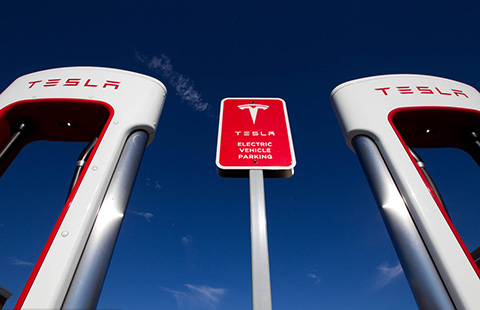Hybrid challenge for auto JV in China
By Wang Chao (China Daily) Updated: 2012-11-30 15:42In China, a new auto brand means another chance to make profit - at least in the short term, and most companies won't let that go.
Driven by the belief hybrid brands are the next cash cow, companies have launched a slew of models and more are in the pipeline.
Ma Jun, vice-president of Chang'an Automobile Co, estimates that every Chinese model has an average life span of three to four years, and can expect total sales of around 300,000 units. For foreign brands, the number could go up to 1 million.
For models that are already in the market, Ma says it is difficult to say whether they are successful or not. "They eventually need to be tested by the market and consumers."
Joe Hinrichs, group vice-president and president of Asia-Pacific and Africa for Ford Motor Co, says it is curious that there is brand consolidation in the US, while in China there is brand proliferation.
But that doesn't mean Ford has stopped introducing new models. Earlier this year, the company launched the New Focus model, while the old generation of Focus, or the classic Focus, is still being manufactured.
"The older generation is sustainable only when it meets the new standards and emission requirements," Hinrichs says. "The classic Focus is only five years old, and it is still very competitive in terms of fuel economy, emission and safety standards."
Chang'an Ford hasn't officially announced any plans for the hybrid segment.
Although SAIC-Volkswagen didn't respond directly to queries on whether its old production lines are being used to make hybrid variants, the company indicated that it was trying to give the market more mature products "no matter if it is a mature product line, or an obsolete one. Decisions are influenced by the market, facilities, and the maturity level of the product lines," the company says.
According to industry experts, the new joint-venture brand developed by SAIC-Volkswagen will most likely be an electric care patterned on the latter's Lavida model.
The company says: "After billions of investment in research and development, SAIC-Volkswagen is now capable of developing a new brand on its own."
Most of the hybrid brands are mainly designed for the Chinese market and hence have limited export potential.
"If we export from China, there will be logistics and tax costs to bear in mind. Also, our products will be competing directly with the mature products in these countries," Hinrichs says.
Guangqi Honda is among the few joint ventures that have stepped up hybrid vehicle manufacture and also tasted success with its joint-venture brand Everus.
Since the Everus S1 model entered the market in 2011, it has achieved decent sales volume in markets like Guangdong, Henan, Anhui, and Jiangsu, the company says. The Everus S1 2012 was launched in April and monthly sales have climbed to 3,000 units.
The company says the model has become a weapon to fight for third-tier cities. "As the first self-owned joint-venture brand, Everus demonstrates the R&D strength of Guangqi Honda."
Since it is jointly developed by Chinese and foreign partners, the intellectual property rights for the Everus belong to Guangqi Honda.
- Vanke A Shares slump by daily limit
- Asia-Pacific head of SAS bullish on China
- China makes bold entry into LatAm health market
- Biopharma, healthcare stocks set for Q3 bounce
- Internet + big data = better service
- Hongkong and Shanghai Hotels preparing to pass the test of time
- Brexit effect eases, rebound likely
- Huaxia Finance CEO wants to give hope to small companies


















